
Balloon Sinuplasty
Many drugs and treatments do not give long-term sinusitis relief or, worse, have side effects that raise their risk profile and make recurrent usage unpleasant. When this happens, patients frequently look for a more long-term solution such as surgery. Balloon sinuplasty is a common in-office operation performed by doctors at Penn Medicine Becker ENT & Allergy, which has offices in South New Jersey, Central New Jersey, and Philadelphia.
Going through life feeling like you have a continuous head cold sounds difficult. But it’s reality for over 40 million Americans who suffer from chronic sinusitis. Sinusitis (or rhinosinusitis as it is officially known) occurs when the nose and sinus passages become swollen and inflamed. This leads to a build-up of mucus as well as blockage of the drainage pathways. Congestion, swelling, discolored discharge, cough, post nasal drip, facial pain and pressure, headaches, and diminished sense of smell are all signs and symptoms of chronic sinusitis. In some patients, these chronic symptoms are worsened when infections simultaneously occur with the underlying condition.
Chronic sinusitis can have a significant impact on one’s overall quality of life, and getting relief can be a challenge. Patients are typically directed to medical treatments like over-the-counter medications, mucous thinning agents, decongestants, and saline solutions, and these work for many people. Others resort to prescription sinus and allergy medications such as nasal steroids and nasal and oral antihistamines. Others require still stronger medications such as prescription oral steroids and oral antibiotics, while some look to alternative therapies like herbal medications and acupuncture for relief.

Open Blocked Sinuses
A small balloon gently opens and reshapes your sinus pathways, restoring normal sinus drainage

Quick Recovery
Many patients resume normal activities the next day

In-Office Procedure
The Balloon Sinuplasty procedure is performed in our office, and typically lasts 1 hour

Instant Relief
Balloon Sinuplasty keeps sinus passages open, offering long-term relief.
In many cases, these medications and treatments do not provide long-term relief or, worse, they may have side-effects that increase their risk profile and make recurrent use undesirable. When this occurs, patients often seek a more permanent treatment option. If your sinusitis has been unresponsive to treatment, you might be a candidate for balloon sinuplasty. Balloon sinuplasty is routinely performed as a brief, in-office procedure by ENT physicians at Penn Medicine Becker ENT & Allergy with locations throughout South New Jersey, Central New Jersey, and Philadelphia.

- Philadelphia, PA
- Sewell, NJ
- Voorhees, NJ
- Robbinsville, NJ
- Princeton, NJ
- Monroe, NJ
- Plainsboro, NJ
- Lawrenceville, NJ
- Hillsborough, NJ
- Yardley, PA
What is Balloon Sinuplasty?
Sinuses drain through small holes known as ostia. When these ostia become blocked due to structural blockage or a swollen sinus lining, the drainage pathways of the sinuses are impacted and sinusitis (swelling of the sinus lining) ensues. Balloon sinuplasty is a minimally invasive, office-based procedure designed to remodel and open up blocked sinus passages using a balloon catheter similar to the balloon catheters used to open blocked arteries and vessels of the heart in angioplasty.
While the treatment will not necessarily eliminate all symptoms of sinusitis, patients generally report a decrease in the pressure, congestion, and other symptoms that characterize their sinusitis. Results are typically quite positive, with the goal being to reduce the frequency, duration, and severity of sinusitis. Balloon sinuplasty was first cleared by the FDA in 2005 and has been performed on hundreds of thousands of patients since. It is often performed under local anesthesia and provides patients long-term relief without the longer recovery period associated with traditional sinus procedures.
The Benefits of Balloon Sinuplasty
For patients who suffer from frequent sinus pressure, headaches, and infections, the benefits of balloon sinuplasty can mean a significant improvement in quality of life. Flushing out and opening up the sinus passages reduces congestion, discharge, pressure, and pain associated with sinusitis. Benefits of the balloon sinuplasty treatment can include the following:
- Reduction is sinus-related facial pressure, facial pain, headaches
- Reduction in congestion and post nasal drip
- Improved ability to taste and smell
- Improved drainage
Most patients who undergo balloon sinuplasty find relief and an improved quality of life. As a bonus, the treatment can be performed in an office setting and patients can return to their normal activities quickly after the procedure.
Who is a Candidate for Balloon Sinuplasty?
According to position statements by the American Rhinologic Society and the American Academy of Otolaryngology – Head and Neck Surgery, “Sinus ostial dilation (e.g. balloon ostial dilation) is a therapeutic option for selected patients with chronic rhinosinusitis and recurrent acute rhinosinusitis who have failed appropriate medical therapy.” But not everyone is a candidate for the balloon sinuplasty procedure. Many factors are considered in choosing the proper procedure for a patient, including signs and symptoms, as well as anatomic variations.
Good candidates for balloon sinuplasty include patients of all ages who have chronic sinus swelling and infections causing discomfort and diminished quality of life. Since the severity and length of sinusitis episodes can vary, your ENT may suggest trying other forms of therapy, such as antibiotics, steroids, or other medications to treat your sinusitis before moving forward with balloon sinuplasty. Some patients have conditions that make in-office procedures less desirable. Patients with heart or lung conditions and patients taking blood thinners, for instance, must be carefully evaluated before proceeding with a balloon sinuplasty. Care is taken to work in concert with the patient’s treating provider (e.g., cardiologist, pulmonologist) so that decisions on how and when to proceed are made as a team.
Your Balloon Sinuplasty Consultation
Before your ENT can schedule you for a balloon sinuplasty procedure, you will benefit from an evaluation to determine which treatment is the best choice for your needs. During your telemedicine consultation, a thorough history will be taken as well as a complete head and neck examination. Prior tests (allergy tests, CT scans, etc.) will be reviewed, and nasal endoscopy to evaluate your anatomy will often be performed. Once this history and physical exam is completed, your candidacy will be evaluated and you will receive a detailed treatment plan and information on any procedures for which you are a candidate. This is a great time to ask any questions you may have about the procedure in case you have any concerns, such as the cost of balloon sinuplasty, or simply want to learn more about the surgery and your other treatment options.
The Balloon Sinuplasty Procedure
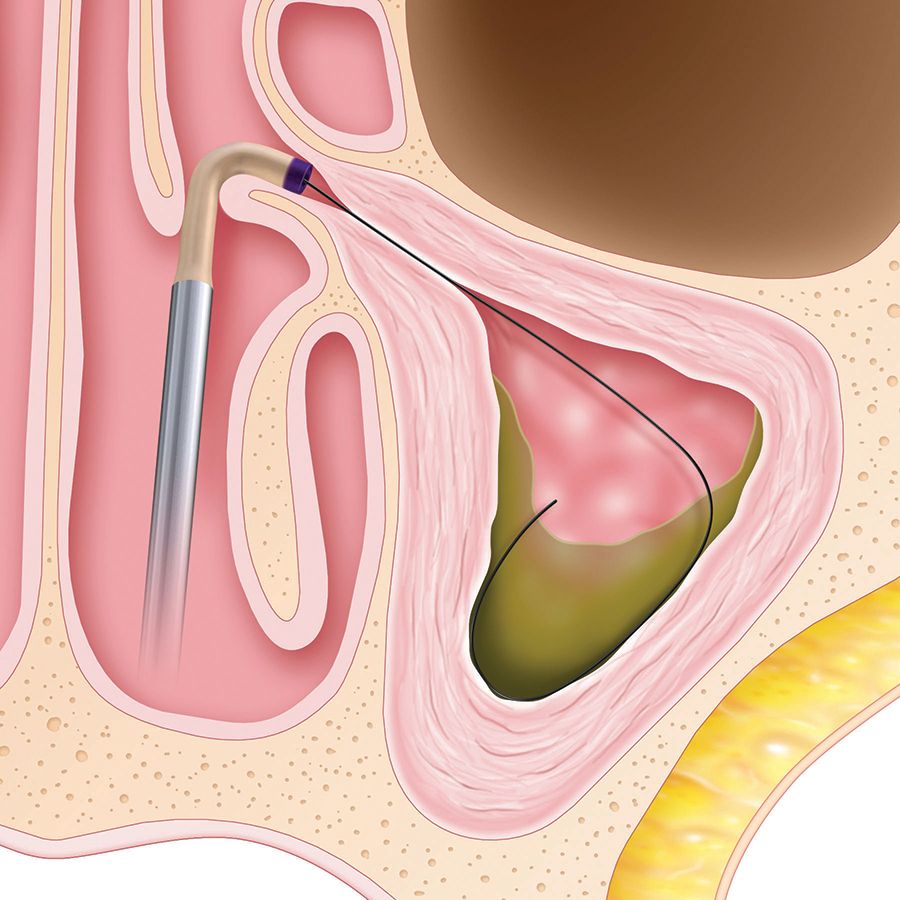
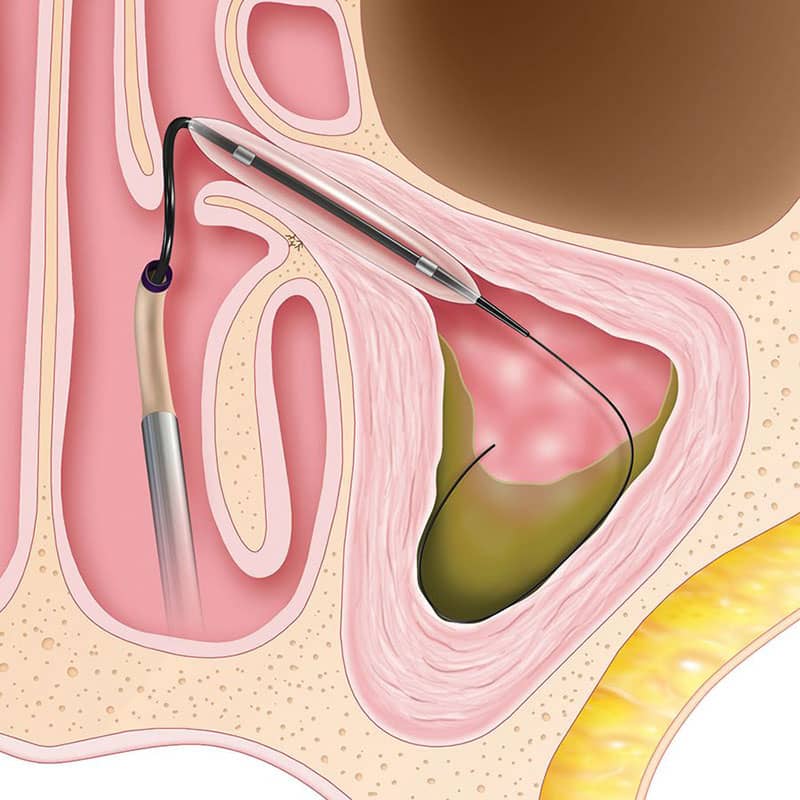
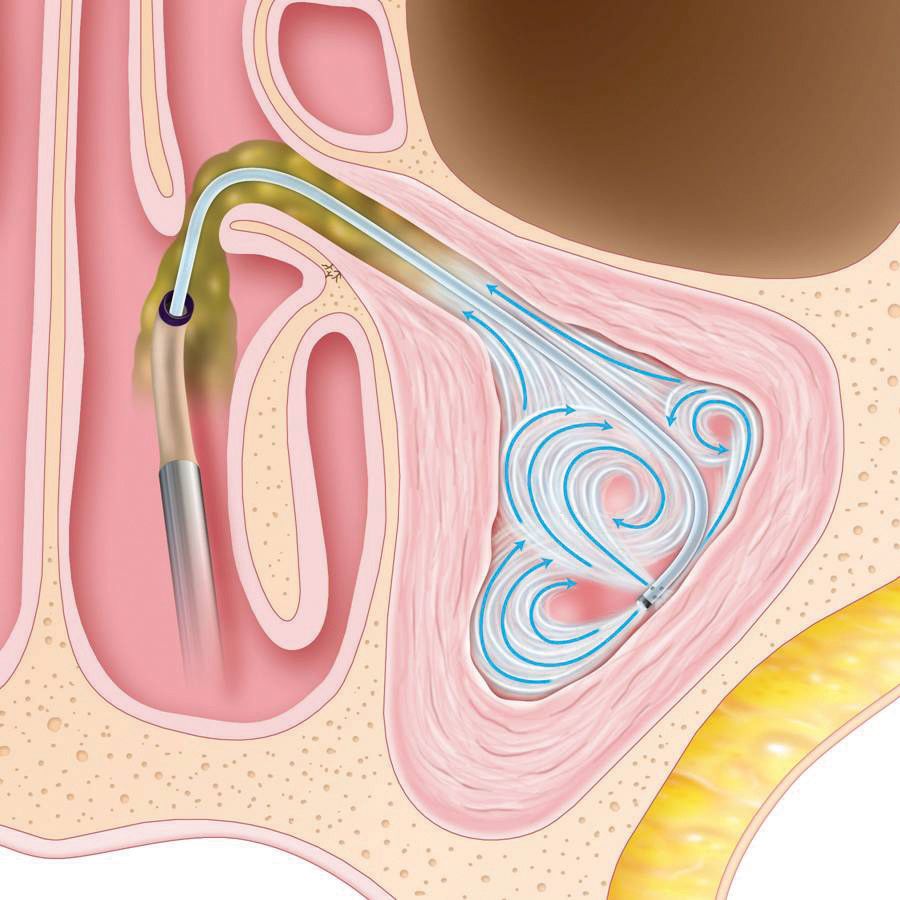
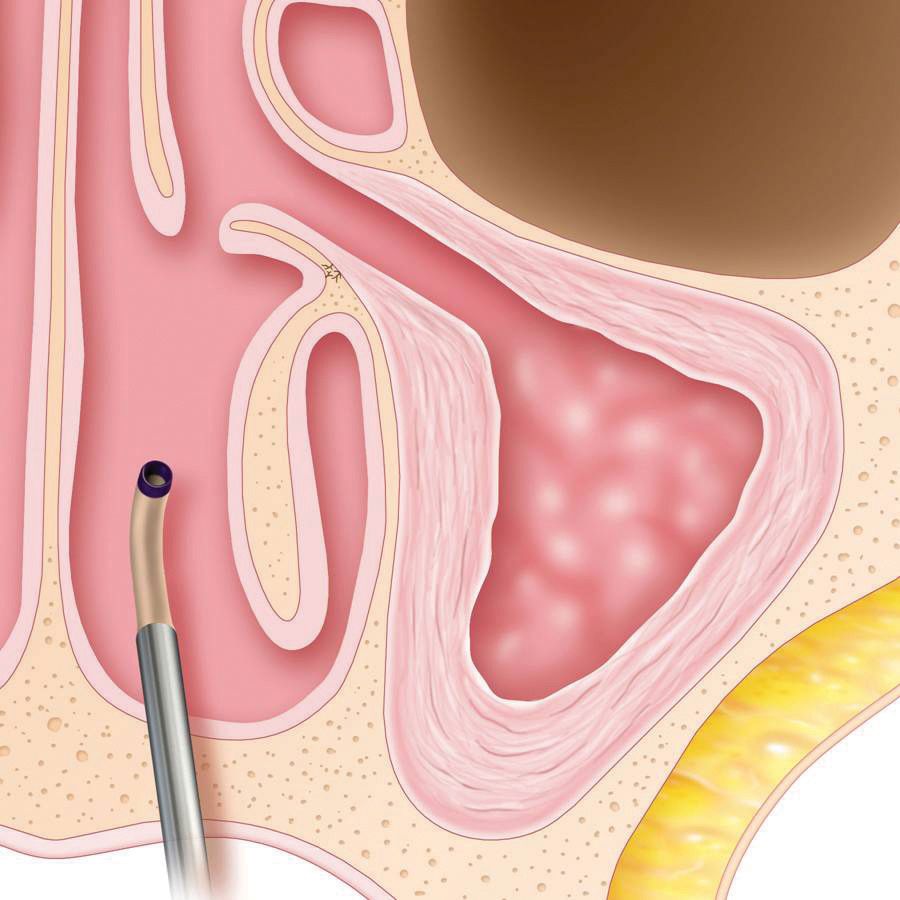
Because the procedure requires no incisions, usually only local anesthesia (lidocaine) is needed to ensure patient comfort during a balloon sinuplasty. This treatment is often performed in the office and typically takes around one hour to complete.
A few days prior to surgery, you may be asked to start on a round of antibiotics to help reduce the overall inflammation in the nose. As the procedure is performed under local anesthesia, it is usually OK to eat or drink a light snack before your treatment. Detailed instructions will be provided prior to your procedure.
The procedure begins with the application of numbing medication for anesthesia, as well as a decongestant such as Afrin or Oxymetazoline. This opens the area up for improved visualization. Using a standard endoscope, the area is examined and prepared and then a balloon catheter is carefully inserted into the sinus opening. Once the balloon is in place, it is slowly inflated. This opens up and reshapes the sinus passages, allowing for proper drainage. Once the passages are sufficiently opened, the sinuses are flushed with a saline solution, cleaning out accumulated pus and mucus that are contributing to the sinusitis symptoms. The balloon is then removed and the sinuses remain clear.
Additional Treatments to Balloon Sinuplasty
Adjunct procedures may also be performed along with balloon sinuplasty to achieve the intended relief. The inferior turbinates are structures on the sides of the nose which swell and shrink and lead to nasal blockage and congestion. These may be decreased in size through various techniques. Powered instrumentation or radiofrequency ablation are just two techniques that are commonly used to shrink the turbinates in the office setting. The septum, which is the dividing “wall” between the two sides of the nose, may be crooked and may contribute to blockage and congestion as well. In select patients, this deviation may be corrected and straightened under local anesthesia. Recent advances have seen the rise of absorbable stents which give off medications to facilitate in the healing process before dissolving in 2-4 weeks. These minimally invasive stents are available for placement in appropriate patients at the end of their balloon sinuplasty procedure.
Balloon Sinuplasty Recovery and Downtime
Historically, nasal and sinus procedures ended with patients receiving uncomfortable packing which was left in place for several days. Balloon sinuplasty is minimally invasive and does not require nasal packing, stitches, or other dressings during the recovery period.
Patients may have a few initial activity restrictions, but pain is minimal, and most people are back to their normal activities within a day or two. One study identified the mean recovery time as 1.4 days with most patients using prescription pain medicine on average for less than one day. There may be some bloody nasal discharge and headaches for a day or two, but these side effects should subside quickly. The procedure fits well into busy schedules because there is no lengthy or uncomfortable recovery period. While a small number of patients may need another treatment down the road, the sinuses remain open in the vast majority of cases.
What to Expect of Balloon Sinuplasty
Multiple published research studies have demonstrated significant and long-lasting improvement in sinus symptoms after balloon sinuplasty. Clinical data supports balloon sinuplasty as delivering “statistically significant, clinically meaningful, and enduring relief of sinusitis symptoms” in patients. One meta-analysis found that the mean number of antibiotic courses decreased from 4.5 courses per year before balloon dilation to 1.6 courses per year after balloon dilation. Other studies have shown lasting improvement by comparing before and after radiology studies of the sinuses. Just as with a traditional sinus surgery, balloon sinuplasty patients enjoy improvement in their symptoms, as well as less frequent and less severe infections.
Balloon Sinuplasty FAQs
Balloon sinuplasty involves expansion and widening of existing sinus openings via placement of a small balloon device. Once the openings are enlarged, sinus drainage can occur more freely, allowing the sinuses to return to their natural healthy state and minimizing the signs and symptoms of sinus disease.
There are no incisions involved in balloon sinuplasty. It is an outpatient, often office-based procedure that flushes the nasal passages with saline solution and opens inflamed passages using a balloon catheter. Though local anesthesia is used during the procedure, it is simply to make the process more comfortable.
Patients generally find the balloon sinuplasty treatment to be tolerable with the aid of local anesthesia. Some pressure (not pain) is to be expected during the treatment, but the relief patients often experience after the procedure is usually felt to be worth this minor discomfort. Most patients find their post-procedure pain is quite limited and easily controlled with medication. In one recent study, balloon sinuplasty patients were found to use prescription pain medication on average for less than one day.
As with any procedure, there are risks. However, complications are uncommon and will be reviewed with you in detail by your physician prior to proceeding. Some trauma to the tissues can occur, as well as infection, injury to the eye, and bleeding. However, because the procedure is minimally invasive, these complication rates are extremely low. In one recent study of 795 patients who underwent balloon sinuplasty, a complication rate of 0.1% was found.
Most patients will see lasting benefit from their balloon sinuplasty treatment. As with any procedure, some patients may need to repeat the procedure or have an alternative procedure at some point. Nevertheless, revision rates are low and most patients experience long-term reduction in sinusitis symptoms.
Yes, balloon sinuplasty devices were first cleared by the FDA in 2005. Since this time, balloon sinuplasty has been performed on hundreds of thousands of patients.
The goal of sinus treatment is to provide lasting relief with the least invasive means possible. In most cases, medical treatments are attempted to help manage the inflammatory process. If these are unsuccessful, there may be a role for a procedure to open the blocked sinus passages. Your ENT will review with you the severity of your symptoms, how many and which medications have been used, your nasal and sinus anatomy, and other factors to devise a comprehensive treatment plan.
Balloon sinuplasty is a good treatment option for many patients with sinus problems. Sometimes, however, patients would benefit from more traditional sinus procedures. Many factors, including each patient’s unique nasal and sinus anatomy, as well as symptom profile, go into these treatment choice decisions, and your ENT will review these options with you.
Yes, the balloon catheters that are used to perform the procedure are made of plastic and do not contain any latex.
If you live in the states of New Jersey or Pennsylvania, Penn Medicine Becker ENT & Allergy Center offers balloon sinuplasty among its services. For a full list of services, please visit our Locations page.
How do I prepare for balloon sinuplasty?
Balloon sinuplasty may be performed in the office setting or in an operating room depending on the circumstances and any other adjunctive procedures that may be performed at the same time. Directions vary by our New Jersey and Philadelphia ENT physicians and facility, but generally speaking, for office-based procedures, you may eat or drink a light snack prior to your procedure. You may be asked to start antibiotics and/or steroids a few days before in order to decrease inflammation.
What happens on the day of my Balloon Sinuplasty procedure?
On the day of your procedure, you will be asked to rest comfortably in a procedure room where you will receive topical medications in your nose to help decongest and numb the area. This will be followed by the injection of numbing medicine (e.g., lidocaine) into the sinus areas. Once the sinus areas are appropriately numb, the procedure will begin. The balloon catheter is placed into the sinus openings and inflated under the view of an endoscope (a small, 3-4mm scope to allow your doctor to see). Once the blocked sinuses are open, they may be flushed with saline to wash out any thick mucus or infected material.
Where is balloon sinuplasty performed?
Balloon sinuplasty may be performed in your doctor’s office or in an operating room of a hospital or Ambulatory Surgical Center (ASC). Location varies based on several factors including a patient’s general medical history (e.g., bleeding disorders, heart conditions, etc.), as well as factors unique to each patient’s symptomatology and anatomy. Sometimes, adjunctive procedures, such as septoplasty or polyp removal, require the procedure to be performed in a hospital or ASC Operating Room, while in other cases these may be performed in the office setting. Options for your procedure setting will be evaluated and discussed with your physician.
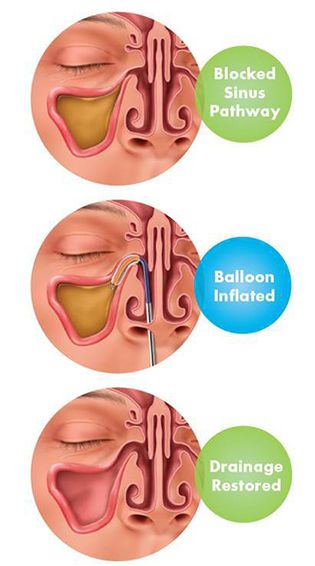
Why Choose Our Specialists?
- Dr. Daniel G. Becker, Founder, and Medical Director of The Penn Medicine Becker ENT & Allergy Center, is a highly trained, board-certified specialist who graduated magna cum laude from Harvard College in 1986 and was awarded a full merit scholarship to attend the University of Virginia Medical School.
- Dr. Samuel S. Becker, Director of Rhinology at The Penn Medicine Becker ENT & Allergy Center, is a highly trained, board-certified specialist who graduated from Amherst College in 1991 and attended medical school at the University of California San Francisco.
- Dr. Kenneth Rosenstein is a highly trained, board-certified otolaryngologist who attended medical school at McGill University. Dr. Rosenstein specializes in ear, nose, and throat care, focusing on pediatric care, thyroid disease, hearing impairment, ear conditions, and voice and swallowing difficulties.
- Dr. Naomi Gregory is a highly trained, board certified otolaryngologist who specializes in the diagnosis and treatment of diseases of the ear, nose, and throat. Dr. Gregory completed medical school at the Philadelphia College of Osteopathic Medicine in Philadelphia PA.
- Dr. Michael Lupa, MD is a highly trained, board-certified otolaryngologist with additional training in sinus surgery and allergy treatment as well as advanced skull base surgery. He studied Biology at Tufts University and went on to complete medical school at Case Western University School of Medicine in Cleveland, Ohio.
- Dr. Robert Mignone is a highly trained, board-certified otolaryngologist-head and neck surgeon who attended medical school at New York College of Osteopathic Medicine.
- Dr. Aubrey McCullough is a highly trained otolaryngologist, facial plastic, and head and neck surgeon who completed medical school at Midwestern University Arizona College of Osteopathic Medicine.
- Dr. Luke Kim is an otolaryngologist who specializes in the diagnosis, medical management, and surgical treatment of diseases of the ear, nose, and throat. Dr. Kim graduated with honors and with distinction from Cornell University and completed his medical studies at the Perelman School of Medicine at the University of Pennsylvania.
- Dr. Omar Ahmed is a highly skilled otolaryngologist-head and neck surgeon who completed his medical training at Rutgers Robert Wood Johnson Medical School. He is known for his extensive expertise in sinus and nasal disorders and has contributed significantly to the field with over 20 published articles and book chapters.
- Dr. Gileno Fonseca is a highly trained otolaryngologist-head and neck surgeon who attended medical school at the University of Florida. Since 2022, it has been board-certified in Otolaryngology.
- Dr. Alisa Yamasaki is a highly trained Otolaryngologist–Head & Neck Surgeon who completed her undergraduate studies at Dartmouth College and her medical degree at Harvard Medical School. She also completed a fellowship in Facial Plastic and Reconstructive Surgery at the University of Michigan Medical Center.
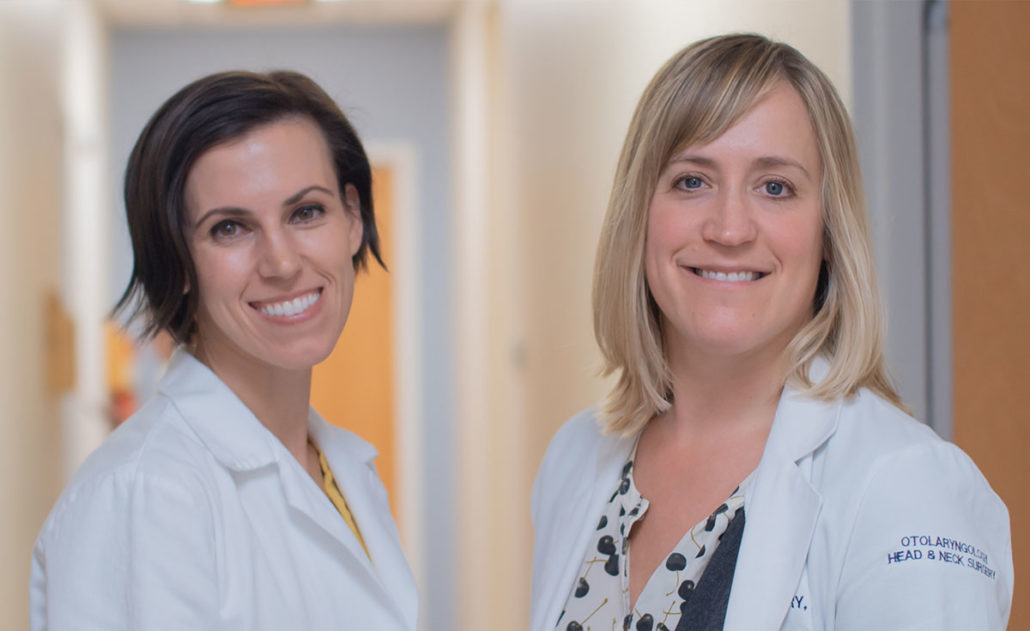
This often depends on the location where the procedure is performed. For office based procedures, typically a topical (sprayed) and local (injected) anesthesia is used. Typically lidocaine is used in this setting, although other alternatives are available. In the operating room of a hospital or Ambulatory Surgery Center, the procedure may be performed under local/topical anesthesia, but general anesthesia is often used in this setting.
Balloon sinuplasty may be performed as a stand-alone procedure or with other adjunctive procedures depending on a patient’s symptoms and anatomy. For instance, sometimes patients may have nasal obstruction along with sinusitis. If the nasal obstruction is due to a deviated septum or enlarged inferior turbinates (structures that line the side of the nasal pathway), these may be addressed at the same time as a balloon procedure is performed.
Duration of procedure varies and is dependent on several factors including the exact procedure being performed, as well as a patient’s unique anatomy. Generally speaking ,an in-office balloon sinuplasty procedure takes a little over an hour to perform.
No procedure – including balloon sinuplasty – is 100% effective for all patients. In these cases, patients may need additional procedures in order to obtain the relief they desire. Sometimes, this may be as simple as taking a few minutes to remove some post-procedure scar tissue in the office or to re-inflate a balloon into a particular sinus to open it up further. In other cases, the sinuses may need to be opened more widely as with traditional endoscopic sinus surgery or adjunctive procedures like septoplasty or turbinate reduction may need to be performed in order to help a patient achieve proper symptomatic relief.
Recent studies evaluated health care utilization in the year following balloon sinuplasty and the results were encouraging. Average rhinosinusitis episodes per patient decreased from 5.2 to 1.0. Average number of antibiotic courses decreased from 4.5 to 1.6.
Recovery is minimal. One recent study showed that most patients return to normal activities in 1.4 days.
Patients’ insurance coverage varies by insurance company, particular plan, geography, and several other factors. In general, however, balloon sinuplasty is a covered procedure by many insurance companies and plans. Prior to your procedure, your physician’s office will often check with your insurance company and inform you of your particular benefits, including coverage, co-payments, and deductibles. You are, of course, always encouraged to call the company yourself.

